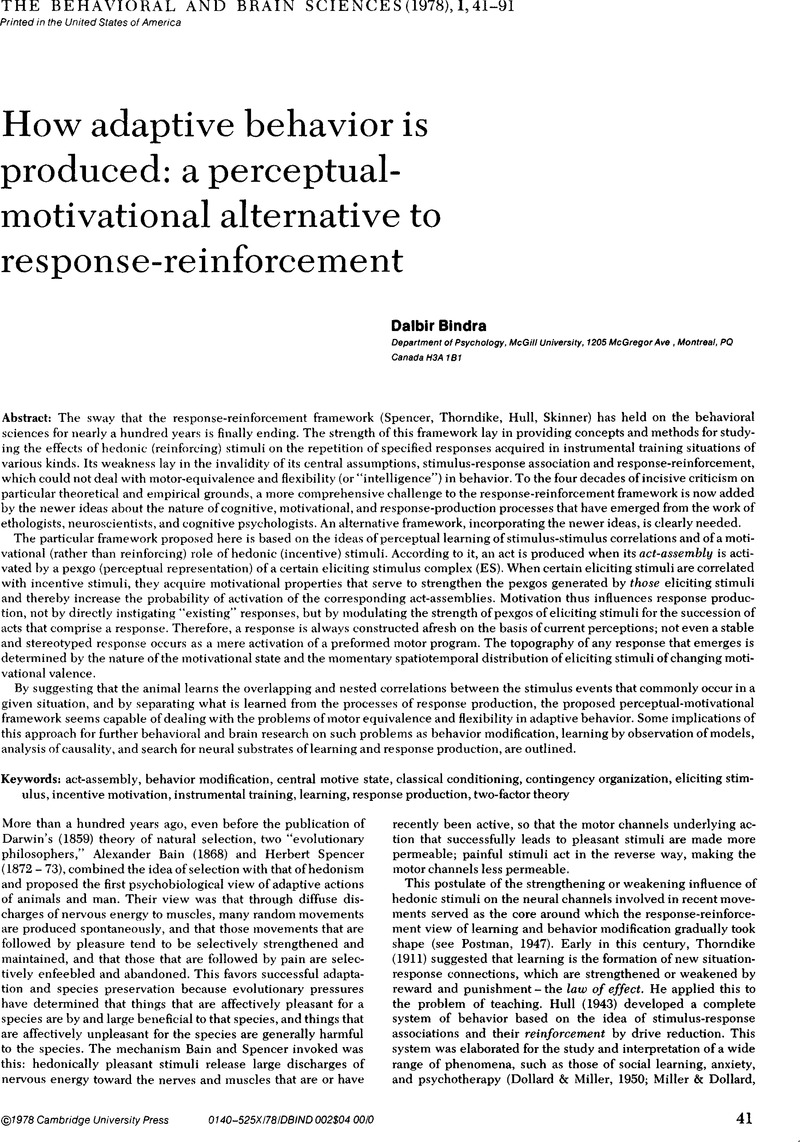No CrossRef data available.
Article contents
With reinforcement in trouble, what about motivation?–Bindra's alternative
Published online by Cambridge University Press: 04 February 2010
Abstract
An abstract is not available for this content so a preview has been provided. Please use the Get access link above for information on how to access this content.

- Type
- Open Peer Commentary
- Information
- Copyright
- Copyright © Cambridge University Press 1978
References
REFERENCES
Abelson, R. Computer simulation of‘hot’ cognition. In: S., Tomkins and Messick, S. (eds.), Computer Simulation of Personality. New York; Wiley, 1963.Google Scholar
Janis, I. L., and Mann, L.Decision Making: A Psychological Analysis of Conflict, Choice, and Commitment. New York, Free Press, 1977.Google Scholar
Rescorla, R. A. Conditioned inhibition of fear. In: Mackintosh, N. J., Honig, W. K. (eds.), Fundamental Issues in Associative Learning. Halifax, Nova Scotia, Dalhousie University Press, 1969.Google Scholar
Verplanck, W. S. and Skinner, B. F. In: Estes, W. K. et al. , Modern Learning Theory. New York, Appleton-Century-Crofts, 1954.Google Scholar


